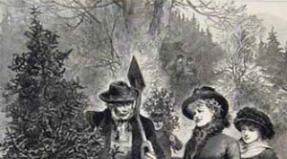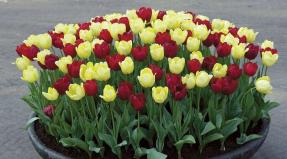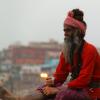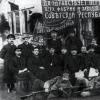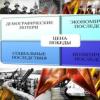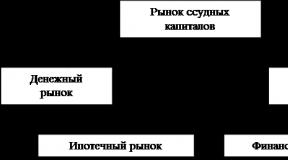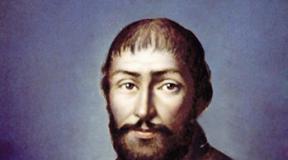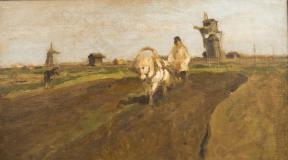The division into castes in India. Myth and reality of caste. If a child is born as a result of an inter-caste marriage, to which caste will he be assigned
Indian society is divided into estates called castes. Such a division occurred many thousands of years ago and has survived to this day. Hindus believe that, following the rules established in their caste, in the next life you can be born a representative of a slightly higher and more revered caste, take a much better position in society.
Leaving the Indus Valley, the Indian Aryans conquered the country along the Ganges and founded many states here, whose population consisted of two classes, differing in legal and material status. The new Aryan settlers, the victors, seized for themselves in India both land, and honor, and power, and the defeated non-Indo-European natives were plunged into contempt and humiliation, turned into slavery or into a dependent state, or, pushed into the forests and mountains, led there in inaction thoughts of a meager life without any culture. This result of the Aryan conquest gave rise to the origin of the four main Indian castes (varnas).
Those original inhabitants of India who were subdued by the power of the sword suffered the fate of captives and became mere slaves. The Indians, who voluntarily submitted, renounced their paternal gods, adopted the language, laws and customs of the conquerors, retained personal freedom, but lost all land property and had to live as workers on the estates of the Aryans, servants and porters, in the homes of rich people. From them came the Shudra caste. "Shudra" is not a Sanskrit word. Before becoming the name of one of the Indian castes, it was probably the name of some people. The Aryans considered it below their dignity to enter into marriage alliances with representatives of the Shudra caste. The Shudra women were only concubines among the Aryans. Over time, sharp differences in fortunes and professions formed between the Aryan conquerors of India themselves. But in relation to the lower caste - the dark-skinned, subjugated native population - they all remained a privileged class. Only the Aryans had the right to read the sacred books; only they were consecrated by a solemn ceremony: a sacred cord was placed on the Aryan, making him “reborn” (or “twice born”, dvija). This rite served as a symbolic distinction of all Aryans from the Shudra caste and the despised native tribes driven into the forests. The consecration was performed by laying on a cord, which is worn laid on the right shoulder and descending obliquely over the chest. Among the Brahmin caste, a cord could be placed on a boy from 8 to 15 years old, and it is made of cotton yarn; among the Kshatriya caste, who received it no earlier than the 11th year, it was made from kushi (Indian spinning plant), and among the Vaishya caste, who received it no earlier than the 12th year, it was made of wool.
The "twice-born" Aryans over time divided according to differences in occupation and origin into three estates or castes, which have some similarities with the three estates of medieval Europe: the clergy, the nobility and the middle urban class. The embryos of caste structures among the Aryans existed even in those times when they lived only in the Indus basin: there, from the mass of the agricultural and pastoral population, warlike princes of the tribes, surrounded by people skilled in military affairs, as well as priests who performed sacrificial rites, already stood out. During the resettlement of the Aryan tribes further deep into India, to the country of the Ganges, the warlike energy increased in bloody wars with the exterminated natives, and then in a fierce struggle between the Aryan tribes. Until the conquests were completed, all the people were engaged in military affairs. Only when the peaceful possession of the conquered country began, it became possible to develop a variety of occupations, it became possible to choose between different professions, and a new stage in the origin of castes began.
The fertility of the Indian land aroused the desire for the peaceful pursuit of livelihoods. From this quickly developed an innate Aryan tendency, according to which it was more pleasant for them to work quietly and enjoy the fruits of their labor than to make heavy military efforts. Therefore, a significant part of the settlers ("Vish") turned to agriculture, which gave abundant harvests, leaving the fight against enemies and the protection of the country to the princes of the tribes and the military nobility formed during the period of conquests. This estate, which was engaged in arable farming and partly in shepherding, soon grew so much that among the Aryans, as in Western Europe, they formed the vast majority of the population. Therefore, the name vaishya “settler”, which originally denoted all Aryan inhabitants in new areas, began to denote only people of the third, working Indian caste, and warriors, kshatriyas and priests, brahmins (“prayers”), who over time became privileged classes, made the names of their professions by the names of the two upper castes.

The four Indian estates listed above became completely closed castes (varnas) only when Brahmanism rose above the ancient worship of Indra and other gods of nature, a new religious doctrine of Brahma, the soul of the universe, the source of life from which all beings originated and to which all beings will return. This reformed creed gave religious holiness to the division of the Indian nation into castes, especially the priestly caste. It said that in the cycle of life forms that all existing on earth go through, Brahman is the highest form of being. According to the dogma of the rebirth and transmigration of souls, a being born in human form must go through all four castes in turn: to be a sudra, a vaishya, a kshatriya, and finally a brahmin; having passed through these forms of existence, it is reunited with Brahma. The only way to achieve this goal is for a person, constantly striving for a deity, to exactly fulfill everything commanded by the Brahmins, honor them, please them with gifts and signs of respect. Offenses against the Brahmins, severely punished on earth, subject the wicked to the most terrible torments of hell and rebirth in the forms of despised animals.
Belief in the dependence of the future life on the present was the main pillar of the Indian caste division and the dominion of the priests. The more resolutely the Brahminical clergy placed the dogma of the transmigration of souls at the center of all moral teaching, the more successfully they filled the imagination of the people with terrible pictures of hellish torments, the more honor and influence they acquired. Representatives of the highest caste of the Brahmins are close to the gods; they know the path leading to Brahma; their prayers, sacrifices, holy feats of their asceticism have magical power over the gods, the gods have to fulfill their will; bliss and suffering in the Hereafter depend on them. It is not surprising that with the development of religiosity among the Indians, the power of the Brahmin caste increased, tirelessly praising in their holy teachings respect and generosity to the Brahmins as the surest ways to obtain bliss, suggesting to the kings that the ruler is obliged to have his advisers and make judges of the Brahmins, is obliged to reward their service with rich content. and pious gifts.

So that the lower Indian castes would not envy the privileged position of the Brahmins and would not encroach on it, the doctrine was worked out and strongly preached that the forms of life for all beings were predetermined by Brahma, and that the progress through the degrees of human rebirths is made only by a calm, peaceful life in a given position, true performance of duties. So, in one of the oldest parts of the Mahabharata it says: “When Brahma created creatures, he gave them their occupations, each caste had a special activity: for the brahmins - the study of the high Vedas, for the warriors - heroism, for the vaishyas - the art of labor, for the shudras - humility before other colors: therefore ignorant brahmins, infamous warriors, unskillful vaisyas and disobedient sudras are reprehensible." This dogma, which attributed to every caste, every profession, a divine origin, consoled the humiliated and despised in the insults and deprivations of their present life with the hope of improving their fate in the future existence. He gave the Indian caste hierarchy religious consecration.
The division of people into four classes, unequal in their rights, was from this point of view an eternal, unchanging law, the violation of which is the most criminal sin. People have no right to overthrow the caste barriers established between them by God himself; they can achieve the improvement of their lot only by patient obedience. Mutual relations between the Indian castes were clearly characterized by teaching; that Brahma produced Brahmins from his mouth (or the first man Purusha), Kshatriyas - from his hands, Vaishyas - from thighs, Shudras - from feet soiled in mud, therefore the essence of nature among the Brahmins is “holiness and wisdom”, among the Kshatriyas - “power and strength", among the Vaishyas - "wealth and profit", among the Shudras - "service and humility". The doctrine of the origin of castes from different parts of the highest being is expounded in one of the hymns of the latest, most recent book of the Rig Veda. There are no caste concepts in the older songs of the Rig Veda. The Brahmins attach great importance to this hymn, and every truly believing Brahmin recites it every morning after bathing. This hymn is a diploma by which the Brahmins legitimized their privileges, their dominion.
Thus, the Indian people were led by their history, their inclinations and customs to fall under the yoke of the hierarchy of castes, which turned classes and professions into tribes alien to each other, drowned out all human aspirations, all the inclinations of humanity. The main characteristics of castes Each Indian caste has its own characteristics and unique characteristics, rules of existence and behavior. Brahmins are the highest caste Brahmins in India are priests and priests in temples. Their position in society has always been considered the highest, even higher than the position of the ruler. At present, representatives of the Brahmin caste are also engaged in the spiritual development of the people: they teach various practices, look after temples, and work as teachers.

Brahmins have a lot of prohibitions: Men are not allowed to work in the field and do any manual labor, but women can do various household chores. A representative of the priestly caste can only marry his own kind, but as an exception, a marriage to a Brahmin from another community is allowed. A brahmin cannot eat what a person of another caste has prepared: a brahmin would rather starve than accept forbidden food. But he can feed a representative of absolutely any caste. Some Brahmins are not allowed to eat meat.
Kshatriyas - warrior caste
Representatives of the kshatriyas have always performed the duties of soldiers, guards and policemen. At present, nothing has changed - kshatriyas are engaged in military affairs or go to administrative work. They can marry not only in their own caste: a man can marry a girl from a lower caste, but a woman is forbidden to marry a man from a lower caste. Kshatriyas are allowed to eat animal products, but they also avoid forbidden food.
Vaishya Vaishyas have always been a working class: they were engaged in agriculture, raised cattle, traded. Now representatives of the Vaishyas are engaged in economic and financial affairs, various trade, banking. Probably, this caste is the most scrupulous in matters related to food intake: vaishyas, like no one else, monitor the correct preparation of food and will never accept defiled dishes. Sudras are the lowest caste The Shudra caste has always existed in the role of peasants or even slaves: they were engaged in the dirtiest and hardest work. Even in our time, this social stratum is the poorest and often lives below the poverty line. Shudras can marry even divorced women. Untouchables The untouchable caste stands out separately: such people are excluded from all social relations. They do the dirtiest jobs: cleaning the streets and toilets, burning dead animals, dressing the skin.

Amazingly, the representatives of this caste could not even step on the shadows of representatives of the higher classes. And only recently they were allowed to enter temples and approach people of other classes. Cast Unique Features Having a brahmin in the neighborhood, you can give him a lot of gifts, but you should not expect a response. Brahmins never give gifts: they accept but do not give. In terms of land ownership, sudras can be even more influential than vaishyas.
Shudras of the lower stratum practically do not use money: they are paid for their work with food and household items. It is possible to move to a lower caste, but it is impossible to get a higher caste. Castes and Modernity Today, Indian castes have become even more structured, with many different sub-groups called jati. During the last census of representatives of various castes, there were more than 3 thousand jati. True, this census took place more than 80 years ago. Many foreigners consider the caste system a relic of the past and believe that the caste system no longer works in modern India. In fact, everything is completely different. Even the Indian government could not come to a consensus regarding such a stratification of society. Politicians are actively working on dividing society into layers during elections, adding to their election promises the protection of the rights of a particular caste. In modern India, more than 20 percent of the population belongs to the untouchable caste: they have to live in their own separate ghettos or outside the settlement. Such people should not go to shops, government and medical institutions, and even use public transport.

There is a completely unique subgroup in the untouchable caste: the attitude of society towards it is rather contradictory. This includes homosexuals, transvestites and eunuchs who make a living by prostitution and begging tourists for coins. But what a paradox: the presence of such a person at a holiday is considered a very good sign. Another amazing untouchable podcast is a pariah. These are people who are completely expelled from society - marginalized. Previously, it was possible to become a pariah even by touching such a person, but now the situation has changed a little: a pariah becomes either born from an inter-caste marriage or from pariah parents.
The caste system in India is a social hierarchy that divides the entire population of the country into separate groups of both low and high origin. Such a system presents various rules and prohibitions.
The main types of castes

Types of castes come from 4 varnas (which means genus, species), in accordance with which the entire population was divided. The division of society into varnas was based on the fact that people cannot be the same, there is a certain hierarchy, since each person has his own life path.
The highest varna was varna Brahmins, that is, priests, teachers, scientists, mentors. The second in rank is the varna of kshatriyas, which means rulers, nobles, warriors. next varna Vaishya, they included cattle breeders, farmers, merchants. last varna sudra consisted of servants and dependent people.
The first three varnas and shudras had a clear, even sharp boundary between them. The highest varna is also called “dvija”, which means twice-born. The ancient Indians believed that people are born a second time, when a rite of passage takes place, and a sacred thread is imposed on them.

The main goal of the Brahmins was that they had to teach others and learn themselves, bring gifts to the gods, and make sacrifices. The main color is white.
Kshatriyas

The task of the kshatriyas is to protect the people, as well as to learn. Their color is red.
Vaishya

The main duty of the vaishyas is the cultivation of the land, the breeding of livestock and other respected work in society. Yellow color.
Shudra

The purpose of the Shudras is to serve the three highest varnas, to engage in hard physical work. They had no property of their own and could not pray to the gods. Their color is black.

These people were outside the castes. Most often they lived in villages and could only do the hardest work.
Over the centuries, the social structure and India itself have changed significantly. As a result, the number of community groups increased from four to several thousand. The lowest caste was the most numerous. Of the total population, it included approximately 40 percent of the inhabitants. The upper caste is small, it consisted of about 8 percent of the population. The middle caste was about 22 percent, and the untouchables were 17 percent.
Members of some castes may be scattered throughout the country, while others, for example, live in the same area. But in any case, representatives of each caste live separately and isolated from each other.
Castes in India can be easily identified by numerous features. People differ in type, manner of wearing it, the presence or absence of certain relationships, marks on the forehead, hairstyle, type of housing, food consumed, dishes and their names. It is almost impossible to pretend to be a member of another caste.
What helps to maintain the immutability of the principles of the hierarchy of castes and isolation for so many centuries? Of course, it has its own system of prohibitions and rules. This system controls social, domestic and religious relations. Some rules are immutable and eternal, while others are changeable, secondary. For example, every Hindu from birth to death will belong to his own caste. The only exception can be his expulsion from the caste due to violation of the laws. No one has the right to choose a caste of their own free will or to move to another caste. It is forbidden to marry a person not from one's own caste, only if the husband belongs to a higher varna than his wife. The reverse is absolutely unacceptable.

In addition to the untouchables, there are also Indian hermits, who are called sannyasins. Cast rules don't affect them in any way. Each caste has its own occupation, that is, some are engaged only in agriculture, others in trade, others in weaving, etc. The customs of the caste must be strictly observed and enforced. For example, a higher caste does not have the right to accept food or drink from a lower caste, otherwise it would be considered ritual pollution.
This entire system of hierarchy of the social strata of the population is based on the powerful foundation of ancient institutions. In accordance with them, it is believed that a person belongs to one or another caste due to the fact that he performed poorly or well all the caste duties in his past life. As a result of this, the Hindu has to go through births and deaths, which are influenced by previous karma. Previously, there were movements that rejected these divisions.

Caste system of modern India
Every year in modern India, caste restrictions and the severity of their observance are gradually weakening. Not all prohibitions and rules require clear and zealous observance. In appearance, it is already difficult to determine which caste a person belongs to, with the possible exception of the Brahmins, whom you can see in temples or if you go to. Only now the caste rules regarding marriage are completely unchanged and will not be relaxed. Also today in India there is a struggle with the caste system. For this, special benefits are established for those who are officially registered as a representative of the lower caste. Caste discrimination is prohibited by Indian law and can be punished as a criminal offence. But still, the old system is firmly rooted in the country, and the fight against it is not as successful as many would like.
Ancient India is one of the first civilizations of the world, which brought to the world culture the largest number of various spiritual values. Ancient India is quite the richest subcontinent with a turbulent and complex history. It was here that the greatest religions were once born, empires appeared and collapsed, but from century to century the “enduring” identity of the Indy culture was preserved. This civilization built large and very well-planned cities with bricks with running water and built a pictographic script, which to this day cannot be deciphered.
India got its name from the name of the Indus River, in the valley of which it is located. "Indus" in the lane. means "river". With a length of 3180 kilometers, the Indus originates in Tibet, flows through the Indo-Gangetic lowland, the Himalayas, flows into the Arabian Sea. Various finds of archaeologists indicate that in Ancient India there was a human society already during the Stone Age, and it was then that the first social relations arose, art was born, permanent settlements appeared, prerequisites arose for the development of one of the ancient world civilizations - the Indian Civilization, which appeared in Northwest India (today almost the entire territory of Pakistan).
It dates back approximately to the XXIII-XVIII centuries BC and is considered the 3rd civilization of the Ancient East in time of appearance. Its development, like the first two in Egypt and Mesopotamia, was directly connected with the organization of high yields of irrigated agriculture. The first archaeological finds of terracotta figurines and pottery date back to the 5th millennium BC, they were made in Mehrgarh. From this it follows that Mehrgarh can already be considered a real city - this is the first city in Ancient India, which we became aware of from the excavations of archaeologists. The primordial deity of the indigenous population of ancient India - the Dravidians, was Shiva. He is one of the 3 main deities of Hinduism - Vishnu, Brahma, and Shiva. All 3 gods are considered a manifestation of a single divine essence, but each is assigned a specific “field of activity”.
So, Brahma is considered the creator of the world, Vishnu was his keeper, Shiva was his destroyer, but it is he who recreates it. Shiva among the indigenous people of Ancient India was considered the main god, was considered a model who had achieved his spiritual self-realization, the ruler of the world, the demiurge. The Indus Valley extends to the NW of the subcontinent in the neighborhood of ancient Sumer. Between these civilizations, of course, there were trade relations, and it is quite possible that it was Sumer who had a huge impact on Indian civilization. Throughout Indian history, the northwest has remained the main route for the invasion of new ideas. All other routes to India were so closed by the seas, forests and mountains that, for example, the great ancient Chinese civilization left almost no traces in it.
Formation of slave states.
The development of agriculture and crafts, as well as aggressive wars, led to the appearance of property inequality among the Aryans. The rajas who led the predatory campaigns accumulate a lot of wealth. With the help of warriors, they strengthen their power, make it hereditary. The Rajas and their warriors turn the captives into slaves. From the peasants and artisans they demand the payment of taxes and work for themselves. Rajas are gradually turning into kings of small states. During wars, these small states are united into one, and then the ruler becomes a maharaja (“big king”). Over time, the council of elders loses its significance. From the tribal nobility, military leaders and officials are recruited who are in charge of collecting "taxes, organizing deforestation and draining swamps. Brahmin priests begin to play a significant role in the emerging state apparatus .. They taught that the king is higher than other people, that he is "like the sun , burns eyes and heart and no one on earth can even look at him.
Castes and their role.
In the slave-owning states of India in the first millennium BC. e. The population was divided into four groups, called castes. The first caste consisted of Brahmins. Brahmins did not engage in physical labor and lived on income from sacrifices. The second caste - kshatriyas - was represented by warriors; they also controlled the administration of the state. Power struggles often took place between Brahmins and Kshatriyas. The third caste - vaishyas - included farmers, shepherds and merchants. All the local population conquered by the Aryans made up the fourth caste - the Shudras. Shudras were servants and did the hardest and dirtiest work. Slaves were not included in any caste. The division into castes broke the old tribal unity and opened up the possibility of uniting people who came from different tribes within the same state. Caste was hereditary. The son of a brahmin was born a brahmin, the son of a sudra was born a sudra. To perpetuate castes and caste inequality, the Brahmins created laws. They say that the god Brahma himself established inequality between people. Brahma, according to the priests, created Brahmins from his mouth, warriors from his hands, Vaishyas from his thighs, and Shudras from his feet, which were covered with dust and dirt. Caste division doomed the lower castes to hard, humiliating work. It closed the way for capable people to knowledge and state activity. Caste division hindered the development of society; it played a reactionary role.
Caste is the original civilizational model,
built on its own conscious principles.
L. Dumont "Homo Hierarchicus"
The social structure of the modern Indian state is unique in many respects, primarily due to the fact that it is still, as it was several millennia ago, based on the existence of the caste system, which is one of its main components.
The word "caste" itself appeared later than the social stratification of ancient Indian society began. Initially, the term "varna" was used. The word "varna" is of Indian origin and means color, method, essence. In the later laws of Manu, instead of the word "varna", the word "jati" was sometimes used, meaning birth, clan, position. Subsequently, in the process of economic and social development, each varna was divided into a large number of castes, in modern India there are thousands of them. Contrary to popular belief, the caste system in India has not been abolished, but still exists; The law abolished only discrimination based on caste.
Varna
 In ancient India, there were four main varnas (chaturvarnya), or estates. The highest varna - the brahmins - are priests, clerics; their duties included the study of sacred texts, the teaching of people and the performance of religious rites, since it was they who were considered to have the proper holiness and purity.
In ancient India, there were four main varnas (chaturvarnya), or estates. The highest varna - the brahmins - are priests, clerics; their duties included the study of sacred texts, the teaching of people and the performance of religious rites, since it was they who were considered to have the proper holiness and purity.
The next varna is the kshatriyas; these are warriors and rulers who had the necessary qualities (for example, courage and strength) to manage and protect the state.
They are followed by vaishyas (merchants and farmers) and sudras (servants and laborers). An ancient legend about the creation of the world tells about the attitude to the last, fourth varna, which says that at first three varnas were created by God - Brahmins, Kshatriyas and Vaishyas, and later the people (praja) and cattle were born.
The first three varnas were considered the highest, and their representatives were "twice born". The physical, “first” birth was only a door to this earthly world, however, for internal growth and spiritual development, a person had to be born a second time - again. This meant that representatives of privileged varnas underwent a special rite - initiation (upanayana), after which they became full members of society and could learn the profession that they inherited from representatives of their kind. During the ceremony, a lace of a certain color and material, prescribed in accordance with the tradition of this varna, was put on the neck of a representative of this varna.
It was believed that all varnas were created from the body of the first man - Purusha: brahmins - from his mouth (the color of this varna is white), kshatriyas - from his hands (red color), vaishyas - from the hips (varna color is yellow), shudras - from his feet (black colour).
The "pragmatism" of such a class division was that initially, as it is supposed, the assignment of a person to a certain varna was due to his natural inclinations and inclinations. For example, the one who could think with his head (therefore, the symbol is the mouth of Purusha) became a brahmin, he himself had the ability to learn and could teach others. A kshatriya is a person with a warlike nature, more inclined to work with his hands (that is, to fight, therefore the symbol is the hands of Purusha), etc.
The Shudras were the lowest varna, they could not participate in religious rituals and study the sacred texts of Hinduism (Vedas, Upanishads, Brahmins and Aranyakas), they often did not have their own household, and they were engaged in the most difficult types of labor. Their duty was unconditional obedience to the representatives of the higher varnas. The Shudras remained "once born", that is, they did not have the privilege of being reborn to a new, spiritual life (probably because their level of consciousness was not ready for this).

Varnas were absolutely autonomous, marriages could take place only within the varna, mixing of varnas, according to the ancient laws of Manu, was not allowed, as well as the transition from one varna to another, higher or lower. Such a rigid hierarchical structure was not only protected by laws and tradition, but was directly related to the key idea of the Indian religion - the idea of reincarnation: "As if childhood, youth and old age come to the incarnated here, so a new body comes: the sage cannot be puzzled by this" ( Bhagavad Gita).
It was believed that staying in a certain varna is a consequence of karma, that is, the cumulative result of his actions and deeds in past lives. The better a person behaved in past lives, the more chances he had in his next life to incarnate in a higher varna. After all, varna affiliation was given by birth and could not change throughout a person’s life. For a modern Westerner, this may seem strange, but such a concept, which has completely dominated India for several millennia up to the present day, created, on the one hand, the basis for the political stability of society, and on the other hand, it was a moral code for huge segments of the population.
Therefore, the fact that the varna structure is invisibly present in the life of modern India (the caste system is officially enshrined in the main law of the country) is most likely directly related to the strength of religious beliefs and beliefs that have passed the test of time and have remained almost unchanged to this day.
But is the secret of the "survivability" of the varna system only in the strength of religious ideas? Perhaps ancient India managed to anticipate the structure of modern societies in some way, and it is not by chance that L. Dumont calls castes a civilizational model?
A modern interpretation of the Varna division might look, for example, as follows.
Brahmins are people of knowledge, those who receive knowledge, teach it and develop new knowledge. Since in modern “knowledge” societies (a term officially adopted by UNESCO), which have already replaced information societies, not only information, but knowledge is gradually becoming the most valuable capital, surpassing all material analogues, it becomes clear that people of knowledge belong to the upper strata of society .

Kshatriyas are people of duty, senior managers, state-level administrators, the military and representatives of the "power structures" - those who guarantee law and order and serve their people and their country.
Vaishyas are business people, businessmen, creators and organizers of their business, whose main goal is to make a profit, they create a product that is in demand on the market. Vaishyas now, just like in ancient times, "feed" other varnas, creating a material base for the economic growth of the state.
Shudras are people for hire, hired workers, for whom it is easier not to take responsibility, but to carry out the work entrusted to them under the control of management.
To live "in one's own varna", from this point of view, means to live in accordance with one's natural abilities, innate predisposition to a certain type of activity and according to one's vocation in this life. This can give a feeling of inner peace and satisfaction that a person lives his own, and not someone else's life and destiny (dharma). It is not for nothing that the importance of following one’s own dharma, or duty, is mentioned in one of the sacred texts included in the Hindu canon, the Bhagavad Gita: “It is better to fulfill one’s duties even imperfectly than other people’s duties perfectly. It is better to die doing your duty, someone else's path is dangerous.
In this “cosmic” aspect, the varna division looks like a completely pragmatic system for realizing a kind of “call of the soul”, or, in a higher language, fulfilling one’s destiny (duty, mission, task, vocation, dharma).
Untouchables
In ancient India, there was a group of people who did not belong to any of the varnas - the so-called untouchables, who de facto exist in India to this day. The emphasis on the actual state of affairs is made because the situation with the untouchables in real life is somewhat different from the legal registration of the caste system in modern India.
The untouchables in ancient India were a special group that performed work related to the then ideas of ritual impurity - for example, dressing animal skins, cleaning up garbage, corpses.
In modern India, the term untouchables is not officially used, as well as its analogues: harijans - “children of God” (a concept introduced by Mahatma Gandhi) or a pariah (“outcast”) and others. Instead, there is the concept of Dalit, which is not considered to carry the connotation of caste discrimination, which is prohibited in the Indian constitution. According to the 2001 census, Dalits make up 16.2% of the total population of India and 79.8% of the total rural population.

Although the Indian constitution has abolished the concept of untouchables, ancient traditions continue to dominate the mass consciousness, which even leads to the killing of untouchables under a variety of pretexts. At the same time, there are cases when a person belonging to the “clean” caste is ostracized for daring to do a “dirty” job. So, Pinky Rajak, a 22-year-old woman from the caste of Indian laundresses who traditionally wash and iron clothes, caused outrage among the elders of her caste, because she took up cleaning at a local school, that is, she violated a strict caste ban on dirty work, thereby insulting her own. community.
castes today
To protect certain castes from discrimination, there are various privileges granted to citizens of lower castes, such as reserved seats in the legislature and in the civil service, partial or full tuition fees in schools and colleges, quotas in higher educational institutions. In order to enjoy the right to such a benefit, a citizen belonging to a state-protected caste must obtain and present a special caste certificate - proof of his belonging to a particular caste listed in the table of castes, which is part of the Constitution of India.
Today in India, belonging to a higher caste by birth does not automatically mean a high level of material security. Often, children from poor upper caste families who enter a college or university on a regular basis with great competition are much less likely to receive an education than children from lower castes.
The discussion about the actual discrimination of the upper castes has been going on for many years. There are opinions that in modern India there is a gradual blurring of caste boundaries. Indeed, it is now almost impossible to determine which caste an Indian belongs to (especially in large cities), and not only in appearance, but often in the nature of his professional activity.

Creation of national elites
The formation of the structure of the Indian state in the form in which it is presented now (developed democracy, parliamentary republic) began in the 20th century.
In 1919, the Montagu-Chelmsford reforms were carried out, the main goal of which was the formation and development of the local government system. Under the English governor-general, who until then had virtually single-handedly ruled the Indian colony, a bicameral legislature was created. In all Indian provinces, a system of dual power (diarchy) was created, when both representatives of the British administration and representatives of the local Indian population were in charge. Thus, at the very beginning of the 20th century, democratic procedures were introduced for the first time on the Asian continent. The British, unwittingly, contributed to the formation of the future independence of India.
After India gained independence, it became necessary to attract national personnel to the leadership of the country. Since only the educated strata of Indian society had a real opportunity to “restart” public institutions under independence, it is clear that the leading role in the government of the country mainly belonged to the Brahmins and Kshatriyas. That is why the unification of the new elites was practically conflict-free, since the Brahmins and Kshatriyas historically belonged to the highest castes.
Since 1920, the popularity of Mahatma Gandhi, who advocated a united India without the British, began to grow. The Indian National Congress headed by him was not so much a party as a national social movement. Gandhi managed to accomplish what no one before him had been able to do - albeit temporarily, but he practically eliminated the conflict of interests between the higher and lower castes.
What tomorrow?
In India in the Middle Ages there were no cities similar to European ones. These cities could rather be called large villages, where time seems to have stopped. Until recently (particularly intense changes began to occur in the last 15–20 years), tourists who came from the West could feel themselves in a medieval atmosphere. Real change began after independence. The industrialization course taken in the second half of the 20th century caused an increase in the rate of economic growth, which, in turn, led to an increase in the proportion of the urban population and the emergence of new social groups.

Over the past 15-20 years, many cities in India have changed beyond recognition. Most of the almost "home" quarters in the center turned into a concrete jungle, and the impoverished quarters on the outskirts were transformed into sleeping areas for the middle class.
By 2028, India's population is projected to exceed 1.5 billion people, the largest percentage of them will be young people and, compared to Western countries, the country will have the largest labor force.
Today, in many countries there is a shortage of qualified personnel in the field of medicine, education and IT services. This situation has contributed to the development in India of such a rapidly developing sector of the economy as the provision of remote services, for example, the United States and Western European countries. The Indian government is now investing heavily in education, especially in schools. One can see firsthand how in the mountainous regions of the Himalayas, where only 15–20 years ago there were only remote villages, state technological colleges grew up on large areas, with excellent buildings and infrastructure, intended for local children from the same villages. The bet on education in the age of "knowledge" societies, especially on school and university education, is a win-win, and it is no coincidence that India occupies one of the leading places in the field of computer technology.

Such a forecast of Indian population growth could be optimistic for India and lead to serious economic growth. But growth does not happen by itself. It is necessary to create conditions: new jobs, the provision of industrial employment and, no less important, the provision of qualified training for all this huge mass of human resources. All this is not an easy task and more of a challenge for the state than a bonus. If the necessary conditions are not met, there will be mass unemployment, a sharp decline in the living standards of the population and, as a result, negative changes in the social structure.
Until now, the existing caste system has been a kind of "fuse" against all sorts of social upheavals throughout the country. However, times are changing, Western technologies are intensively penetrating not only into the Indian economy, but into the consciousness and subconsciousness of the masses, especially in cities, forming a new, non-traditional for many Indians model of desires on the principle of “I want more now.” This model is intended primarily for the so-called middle class (“so-called”, because for India its boundaries are blurred, and the criteria for membership are not entirely clear). The question of whether the caste system can continue to serve as a safeguard against social cataclysms in the new conditions remains open for the time being.
India's caste system continues to attract interest. Castes in India are indeed a curious social phenomenon, however, a tourist who travels to India is unlikely to encounter it, there are many Indoman travelers who live there for months, but they are not interested in castes because they are not necessary for life.The caste system is not exotic, it is part of the complex organization of Indian society, a multifaceted phenomenon that has been studied by Indologists and ethnographers for more than a century, dozens of thick books have been written about it, so I will publish here only 10 interesting facts about Indian castes - about the most popular questions and misconceptions.
1. What is an Indian caste?
The Indian caste is such a complex phenomenon that it is simply not possible to give an exhaustively complete definition!
Castes can only be described through a series of features, but there will still be exceptions.
Caste in India is a system of social stratification, a separate social group, connected by the origin and legal status of its members. Castes in India are built on the principles of: 1) common religion (this rule is always respected); 2) one profession, usually hereditary; 3) members of castes marry only among themselves, as a rule; 4) caste members generally do not eat with strangers, except in other Hindu castes of a significantly higher social position than their own; 5) members of castes can be determined by who they can take water and food, processed and raw.
2. There are 4 castes in India
In India, there are not 4, but about 3 thousand castes at all, they can be called differently in different parts of the country, and people with the same profession can have different castes in different states. For a complete list of castes by state, see http://socialjustice...
The fact that nameless people on tourist and other near-Indian sites call 4 castes is not a caste at all, these are 4 varnas - chaturvarnya in Sanskrit - an ancient social system.

4 varnas (वर्ना) is an ancient Indian system of estates. Varna of brahmins (more correctly, a brahmin) historically are clergymen, doctors, teachers. Varna kshatriyas (in ancient times it was called rajanya) are rulers and warriors. Varna vaishyas are farmers and merchants, and varna shudras are workers and landless peasants who work for others.
Varna is a color (in Sanskrit again), and each Indian varna has its own color: the Brahmins have white, the Kshatriyas have red, the Vaishyas have yellow, the Shudras have black, and earlier, when all representatives of the varnas wore a sacred thread - he was just the color of their varna.
Varnas correlate with castes, but in very different ways, sometimes there is no direct connection, and since we have already delved into science, it must be said that Indian castes, unlike varnas, are called jati - जाति.
More about Indian castes in modern India http://indonet.ru/St...
3. Caste of the Untouchables
The untouchables are not a caste. In the times of ancient India, everyone who was not part of the 4 varnas automatically found themselves "overboard" of Indian society, these strangers were avoided, they were not allowed to live in villages, which is why they were called untouchables. Subsequently, these untouchable strangers began to be used in the most dirty, low-paid and shameful work, and formed their own social and professional groups, that is, castes of untouchables, there are several of them, as a rule, this is associated either with dirty work, or with the killing of living beings or death, so that all hunters and fishermen, as well as grave-diggers and tanners, are untouchables.
At the same time, it is not correct to assume that every untouchable is uneducated and poor, this is not true. In India, even before gaining independence and the adoption of a number of legislative measures to prevent discrimination against the lower castes and tribes, there were untouchables who were able to achieve outstanding success in society, an example of this is India's most famous untouchable - an outstanding Indian political, public figure, fighter for human rights and the author of the constitution of India is Dr. Bhim Rao Ambedkar, who received his law degree in England. And quite recently, not just a Dalit, but also a Hijra became the mayor of a city in India http://indonet.ru/fo. ..
4. When did the Indian castes appear?
Normatively, that is, legislatively, the cast-jati system in India was fixed in the Laws of Manu, which date back to the 2nd century BC.
The varna system is much older, there is no exact dating. I wrote more about the history of the issue in the article Castes of India, from varnas to the present http://indonet.ru/ar ...
5. Castes in India are abolished
Castes in India are not abolished or banned, as is often said.
On the contrary, all castes in India are recalculated and listed in the appendix to the Indian constitution, which is called the Table of Castes. In addition, after the census, changes are made to this table, as a rule, additions, the point is not that new castes appear, but that they are fixed in accordance with the data indicated about themselves by the census participants.
Only discrimination based on caste is prohibited, it is written in article 15 of the Indian Constitution, see the test at http://lawmin.nic.in ...
6. Every Indian has a caste
No, this is also not true.
Indian society is very heterogeneous in its structure, and apart from the division into castes, there are several others.
There are caste and non-caste Indians, for example, representatives of Indian tribes (Aborigines, Adivasis), with rare exceptions, do not have castes. And the proportion of non-caste Indians is quite large, see http://censusindia.g for census results. ..
In addition, for some misconduct (crimes), a person can be expelled from the caste and thus deprive him of his status and position in society.
7. Castes are only in India
No, this is a delusion. There are castes in other countries, for example, in Nepal and Sri Lanka, since these countries developed in the bosom of the same huge Indian civilization, as well as in Bali. But there are castes in other cultures, for example, in Tibet, and the Tibetan castes do not correlate with the Indian ones at all, since the class structure of Tibetan society was formed independently from India.
For the castes of Nepal, see Ethnic Mosaic of Nepal http://indonet.ru/St ...
8. Only Indians have castes.
No, now it is not so, you need to delve into history.
Historically, when the vast majority of the population of India professed Hinduism, all Hindus belonged to some kind of caste, the only exceptions were pariahs expelled from the caste and the indigenous, tribal peoples of India, who did not profess Hinduism and were not part of the Indian society. Then other religions began to spread in India - Buddhism, Jainism, India was invaded by other peoples, and representatives of other religions and peoples began to adopt from the Hindus their class system of varnas and the system of professional castes - jati. Now there are castes in Jainism, Sikhism, Buddhism and Christianity, but they are different from the Hindu castes.
It is curious that in northern India, in the modern states of Himachal Pradesh and Kashmir, the Buddhist caste system is not of Indian, but of Tibetan origin.
It is even more curious that even Europeans - Christian missionaries-preachers - were drawn into the system of Indian castes: those who preached the teachings of Christ to noble Brahmins ended up in the Christian "Brahmin" caste, and those who communicated with untouchable fishermen became Christian untouchables.
9. You need to know the caste of the Indian with whom you communicate and behave accordingly.
This is a common misconception, replicated by tourist sites, it is not known for what, it is not based on anything.
It is impossible to determine which caste an Indian belongs to only by his appearance, by his occupation - often too. One acquaintance worked as a waiter, although he came from a noble Rajput family (that is, he is a kshatriya). I managed to identify a familiar Nepalese waiter by his behavior as an aristocrat, since we had known each other for a long time, I asked and he confirmed that this was true, and the guy did not work because of a lack of money at all.
My old friend started his career at the age of 9 as a handyman, cleaning up rubbish in a shop... do you think he is a sudra? no, he is a brahmin (brahmin) from a poor family and 8 children in a row ... 1 more brahmin friend sells in a shop, he is the only son, you have to earn money ...
Another acquaintance of mine is so religious and bright that one would think that he is the real, ideal Brahmin. But no, he is just a shudra, and he was proud of this, and those who know what seva means will understand why.
And even if an Indian says what caste he is, although such a question is considered indecent, it will still not give anything to a tourist, a person who does not know India cannot understand what and why is arranged in this amazing country. So you should not be puzzled by the caste issue, because sometimes it is difficult for India to even determine the gender of the interlocutor, and this is probably more important :)
10. Caste discrimination
India is a democratic country and, in addition to the prohibition of caste discrimination, has introduced benefits for members of the lower castes and tribes, for example, there are quotas for admission to higher educational institutions, for positions in state and municipal bodies.
The problem of discrimination against people from the lower castes, Dalits and tribal people in India is quite serious, casteism is still the basis of life for hundreds of millions of Indians outside of large cities, it is there that the caste structure and all the prohibitions arising from it, for example, in some temples Indian Shudras are not allowed in India, it is there that almost all caste crimes take place, for example, quite a typical crime http://indonet.ru/bl ...

If you are seriously interested in the caste system in India, I can recommend, in addition to the articles section http://indonet.ru/ca ... on this site and publications in the Hindunet, to read books by major European Indologists of the 20th century:
1. Academic 4-volume work by R.V. Russell "The Tribes and Castes of the Central Provinces of India"
2. Louis Dumont's monograph "Homo hierarchicus. Experience in describing the caste system"
In addition, in recent years, a number of books on this topic have been published in India, unfortunately I did not hold them in my hands.
If you are not ready to read non-fiction - read the novel "The God of Small Things" by a very popular modern Indian writer Arundhati Roy, it can be found in RuNet.

